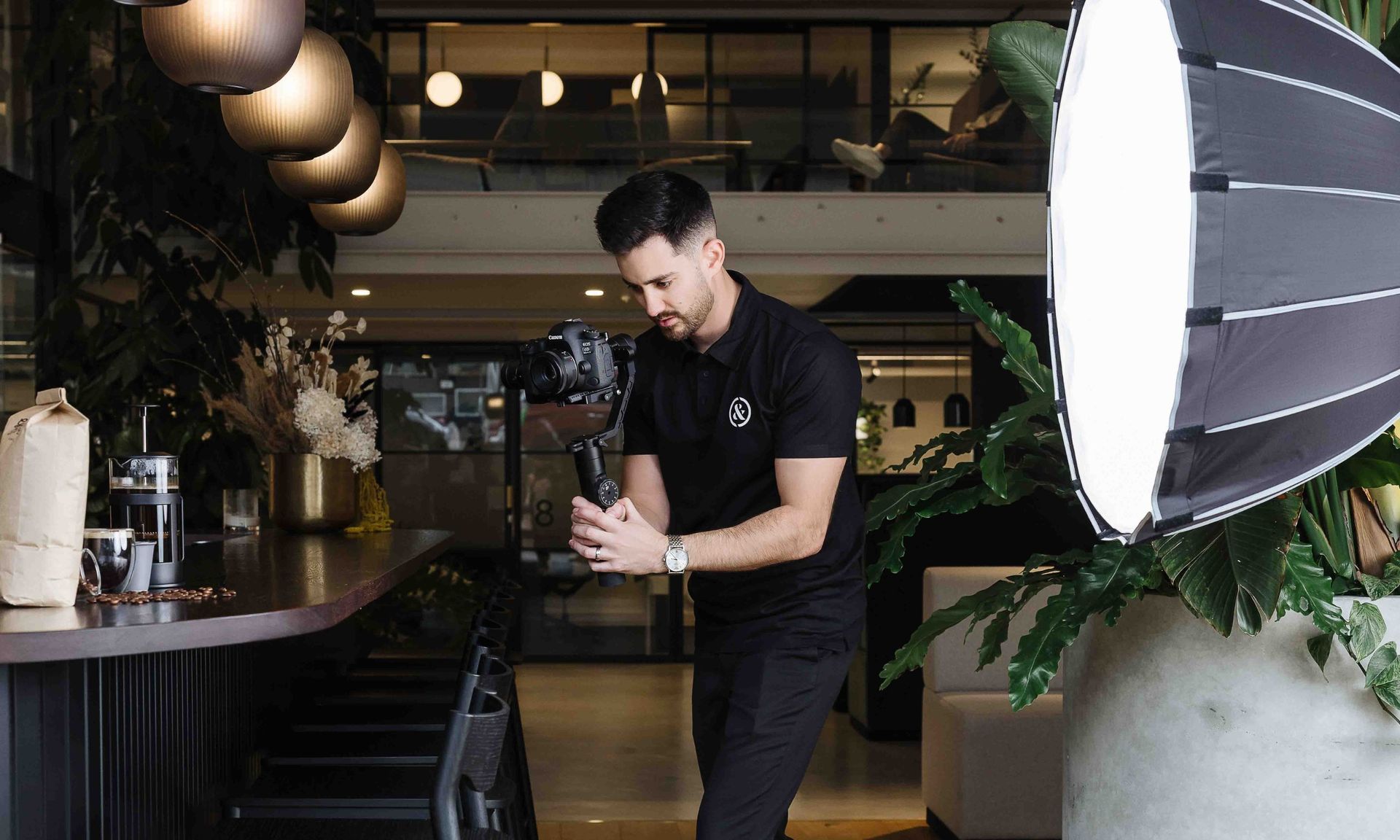Using video in email marketing: A beginner’s guide for SMBs
Using video in email marketing: A beginner’s guide for SMBs
Email remains one of the most effective ways to reach and convert potential customers, but with inboxes overflowing, static content often gets ignored. Video can help cut through the noise and make your message more engaging. Email marketing continues to be recognised as a powerful tool for building engagement and reaching the right audiences, especially when the content is relevant and easy to absorb (IJRPR, 2023). Yet many SMBs are still missing out on the opportunity to incorporate video into their email strategy.
ARTICLE CONTENTS
What this article will cover
This article is here to help small and medium-sized businesses get started with video email marketing. You’ll find clear, practical advice on how to use video in your email strategy, avoid common technical pitfalls, and create content that encourages people to click, watch, and act.
Why video marketing and email are a powerful combination
See how video can boost email engagement, increase clicks, and build stronger connections.
Types of videos you can use in your emails
From demos to testimonials, learn which video types work best and when to use them.
How to include video in your email strategy
Practical tips for using video in email without running into formatting or deliverability issues.
Tips to optimise your email video strategy for better results
Smart ways to improve performance, from subject lines to video placement and testing.
How to measure the success of your email video content
Track what matters and use simple insights to refine your approach over time.
Why video marketing and email are a powerful combination
"Email marketing continues to be seen as one of the most effective digital tools for building engagement."
International Journal of Research, 2023
Email and video are both strong marketing tools on their own, but together they offer a smart and highly effective way to capture attention, drive clicks, and build stronger connections with potential customers. For SMBs looking to boost engagement, adding video to email can create more dynamic content that encourages people to pause, watch, and take action.
One of the key advantages of video is its ability to convey both emotion and information quickly and clearly. While a block of text might be skimmed or skipped entirely, a short video has the power to stop the scroll and communicate your message in just a few seconds. This is especially useful in email marketing, where attention spans are short, competition in the inbox is high, and first impressions really do matter.
Video can also support decision-making more effectively than static content. Email marketing continues to be seen as one of the most effective digital tools for building engagement and reaching specific audiences, especially when content is relevant and easy to consume (IJRPR, 2023). These kinds of results matter for small businesses, where every email interaction counts.
There’s also a trust factor to consider. Seeing a real person explain a service, demonstrate a product, or share a client story builds credibility and makes your message feel more human. This level of authenticity is especially important for service-based businesses that rely on relationships to drive sales. Combining email and video allows SMBs to communicate in a way that feels more personal, visual, and impactful.
Types of videos you can use in your emails
Not every video needs to be polished like a TV commercial to make an impact. The most effective email videos are often the ones that speak directly to what your audience needs to see or hear at that moment. For small and medium-sized businesses, this means choosing the right type of video based on the customer journey and the goal of the email.
Product or service demos
These short videos show how your offering works in a real-world context, making it easier for potential customers to understand what they’re getting. They’re especially useful for businesses selling something with unique features or benefits that might be hard to explain in words. Including a product demo in an email helps reduce confusion and move people closer to making a decision.
Customer testimonials
A video of a happy client talking about their experience builds trust quickly and helps new leads see the value of your service through someone else’s perspective. These work well in follow-up emails or nurturing sequences, where the goal is to offer reassurance and nudge someone closer to taking action. They’re also a great way to bring social proof into your email content.
Brand story or intro videos
These give people a sense of who you are. A quick “meet the team” or “what we do” video can help humanise your business and create a stronger emotional connection with your audience. This kind of content works well in welcome emails or when introducing your business to potential customers. It can also help set expectations about your values and personality right from the start.
How-to or explainer videos
These videos answer common questions or show how to use your product or service effectively. They’re ideal for audiences who are already interested in what you offer but want more clarity before making a decision. Explainers are especially useful if you sell something technical or process-driven, where clear steps make a big difference to conversion rates.
Event highlights or behind-the-scenes content
Repurposing clips from events, internal moments, or even social media updates can keep your email content fresh and relatable. These videos help people feel more connected to your team and can build loyalty over time. They show that your business is active, real, and people-focused.
How to include video in your email strategy without hurting deliverability
One of the biggest challenges with using video in email isn’t creating the content, it’s getting it to show up properly in the inbox. Many email platforms and devices still don’t support full video playback within the email itself, which means embedding a video file directly can lead to formatting issues, slow load times, or worse, trigger spam filters that stop your message from reaching your audience.
The good news is, you don’t need to embed a full video to make it work. The most effective and user-friendly method is to insert a static thumbnail image or animated GIF that links to the full video hosted elsewhere, such as YouTube, Vimeo, or a landing page on your website. This keeps the email lightweight and ensures compatibility across devices and email clients.
Including a clear play button on your thumbnail image helps signal that the content is a video, setting user expectations and improving clarity (Nielsen Norman Group, 2023). A well-designed, relevant thumbnail, ideally with a human element, makes it more likely people will engage.
It’s also important to think about fallback content. If the image fails to load or the user has images turned off, you want to include descriptive alt text that explains what the video is and encourages them to click through. This small detail helps maintain accessibility and improves the user experience.
In short, the goal is to make it easy for the reader to click and watch without slowing down your email or damaging your sender reputation. A simple, well-placed thumbnail that leads to a hosted video is often the best approach for small businesses getting started.
Tips to optimise your email video strategy for better results
Once you’ve figured out how to include video in your emails, the next step is making sure people actually engage with it. A well-placed video can drive more clicks and conversions, but only if the rest of your email supports it. These tips will help you get more out of every send, especially if you’re just starting out.
Subject lines matter
If video is central to your message, make that clear early. Subject lines that mention video can boost open rates, but they should feel natural. “See how we solved this in 60 seconds” often works better than “Watch our new video.” Focus on the benefit, not just the fact it’s a video.
Put the video near the top
Don’t bury your video below long blocks of text. People skim emails quickly, and placing the thumbnail image near the top increases the chance they’ll see it and click through. It also signals that the video is central to your message, not an afterthought.
Use captions or on-screen text
Many people check email in quiet environments where they can’t or won’t turn on sound. Including captions makes your video more accessible and ensures the message still comes through. This is especially useful for product demos and explainer videos.
Include a clear CTA
The video might do the heavy lifting, but it still needs direction. Tell the viewer what to do next, whether that’s booking a consultation, learning more on your site, or replying with a question. Make sure the CTA is clear, easy to follow, and matches the purpose of the email.
Test and refine
Like any marketing effort, results improve when you test different variables. Try experimenting with thumbnail images, subject lines, video length or even the video format to see what resonates. Review your results regularly and adjust based on what works.
Make it part of a bigger journey
One video in one email won’t transform your marketing, but a consistent strategy across your nurture flows, campaigns, or newsletter can. Look at how you can integrate short, helpful videos throughout the customer journey to build familiarity and trust over time.
How to measure the success of your email video content
Sending a video in an email is one step. Knowing whether it’s doing what you hoped is another. To get the most value from your video marketing, it’s important to track how your content performs and use that insight to shape future campaigns.
Part 2
Use the tools already available
Most email platforms give you data on open rates, clicks, and engagement. Depending on where your video is being hosted, you may be able to track additional metrics like views, watch time, and audience retention. If you’re linking to a landing page, Google Analytics can show you how long people stayed on the page and what they did next. These tools help you understand how viewers respond and where the drop-offs are happening.
Start by setting clear goals
Part 1
What you measure depends on what you want to achieve. If your goal is brand awareness, focus on metrics like opens, video views, and watch time. If you’re aiming to drive enquiries or sales, pay more attention to click-through rates, time on site, and any actions taken after someone watches the video. Your metrics should reflect the purpose behind the content.
Part 3
Learn from what works
A short teaser video might get more clicks than a full-length explainer. A testimonial might lead to more replies than a product demo. Tracking these details helps you figure out which formats and placements perform best for your audience. It’s not about perfection, it’s about learning over time and making your next campaign more effective than the last.
Keep reviewing and refining
Even if you’re not running a big campaign, it’s worth checking your results regularly. The more you understand how your audience engages with your videos, the easier it becomes to improve performance and build a video strategy that works.
Part 4
Conclusion
Video and email work well together for small and medium-sized businesses that want to connect more effectively with their audience. Together, they offer a straightforward way to increase engagement, build trust, and guide potential customers toward taking action. Even a short, well-timed video can make your message more compelling and help your business stand out in the inbox.
If you’re new to video email marketing, start with a single campaign or content idea and build from there. Track what performs well, refine your approach, and focus on what brings value to your audience. Over time, this creates a more intentional strategy that feels clear, consistent, and effective.
Need help building out a smart video or email marketing plan?
Clarke & Clarke can help you integrate the two in a way that makes sense for your business and your goals. Book a strategy session today and let’s build a marketing system that drives real results.
Frequently asked questions
Getting started with video in your email marketing can raise a few questions, especially when you’re trying to keep things simple, effective, and within budget. These FAQs cover the basics so you can move forward with confidence.
How do I choose the right kind of video for my email?
It depends on your goal. Use a testimonial or brand story for trust-building, a product demo to explain what you offer, or a how-to video to answer questions and reduce friction.
What’s the best video length for email marketing?
Shorter is better. Aim for under 90 seconds to keep attention high and encourage more people to watch the whole thing.
Will adding video slow down my email or affect deliverability?
It can, if embedded incorrectly. Instead of embedding, use a clickable image or animated GIF that links to the video hosted on your site or platform, this keeps the email fast and user-friendly.
Can I personalise video content for my email list?
Yes, and even small touches can make a difference. Addressing the viewer directly or tailoring the message to a specific segment can boost engagement and help your emails feel more relevant.
How often should I include video in my email campaigns?
It depends on your audience and content plan, you don’t need to include video in every email. Start with one or two campaigns, track performance, and build from there.
















